How to Put on a Condom the Right Way

1.3K
Welcome to this comprehensive guide on how to correctly put on a condom. In a world where sexual health is paramount, understanding the proper use of condoms is essential for safeguarding your well-being. This guide is designed to provide you with the knowledge and confidence you need to ensure both effective protection and peace of mind.
The Basics of Condoms

Condoms are a cornerstone of safe and responsible sexual activity. Let’s start our journey by exploring the fundamental aspects – what options are out there for you to choose from:
Types of Condoms:
- Latex: Latex condoms are the most widely used and highly effective. They provide robust protection against both pregnancy and a wide range of STIs.
- Polyurethane: These condoms are an excellent choice for individuals with latex allergies. They offer similar protection and are compatible with oil-based lubricants.
- Lambskin: While effective against pregnancy, lambskin condoms do not protect against STIs due to their larger pores.
Why Proper Condom Use Matters
Proper condom use is not just a routine; it’s a crucial step in protecting your sexual health. Understanding the significance of using condoms correctly can have a profound impact:
STI Prevention: Condoms act as a barrier that significantly reduces the risk of STI transmission during sexual intercourse. Proper use can lower the chances of contracting or spreading infections such as HIV, chlamydia, and gonorrhea.
Pregnancy Prevention: Condoms are a reliable form of contraception when used consistently and correctly. They provide a way to prevent unintended pregnancies, offering peace of mind to sexually active individuals.
Step-by-Step Guide: How to Put on a Condom

Now, let’s delve into the specifics of how to correctly put on a condom.
- Check the Expiration Date: Take a quick peek at the condom’s packaging to make sure it’s not past its prime. Using an expired one isn’t ideal.
- Open the Package Carefully: Use your fingers to open the condom packet gently. No need to get fancy with scissors or teeth – we want to avoid any accidental tears.
- Get the Direction Right: Before rolling it onto the penis, make sure you’ve got the condom facing the right way. If it doesn’t unroll smoothly, flip it over. Don’t worry, the next section has more advice on this.
- Leave Some Space at the Tip: Pinch the tip of the condom to create a small space. This extra room is important and reduces the risk of it breaking during action.
- Unroll the Condom: Roll it down the penis, taking it slow and steady. Smooth it out as you go, making sure there are no odd air bubbles or twists.
Myth: Condoms are complicated. Fact: They’re as easy as ABC – Always Be Covered!
- Smooth Out Air Bubbles: If you see any air bubbles inside, gently squeeze them toward the tip while holding the base. It’s like giving your condom a quick checkup.
- Make Sure It Fits Comfortably: The condom should feel snug but not too tight – we want it to stay in place without causing discomfort.
- Lube It Up if You Like: If things are feeling a bit dry, you can use some lube. Opt for water-based or silicone-based lubes and apply a bit to the outside for added comfort.
- After the Fun: When you’re done, before things soften up, hold onto the base of the condom as you pull out. Then, toss it in the trash. Remember, no flushing!
Knowing If It’s The Right Direction

- Reservoir Tip Orientation: Check the tip of the condom for the reservoir tip, which looks like a small nipple or pouch. Make sure that this tip is positioned on the outer side when unrolling the condom.
- Roll Towards the Base: As you start to unroll the condom, it should easily roll down the length of the erect penis towards the base. If it feels like it’s resisting or rolling in the wrong direction, gently retract it and try again.
- Logo or Branding: Some condoms have logos, branding, or markings on the outside. These should typically be on the exterior when unrolling the condom.
- Visual Inspection: Examine the condom visually as you unroll it. If it appears smooth and unobstructed, it’s likely rolling in the correct direction. If it seems twisted or wrinkled, stop and reposition.
For Those Who Are Visual Learners…
Choosing the Right Condom

Choosing the right condom size is important for both comfort and safety. An ill-fitting condom can lead to discomfort and an increased risk of breakage. Here’s a detailed list on how to make sure you get the size right:
- Choosing the Right Size: One of the key aspects of using condoms is finding the right size. An incorrectly sized condom can lead to discomfort and potentially increase the risk of breakage. So, it’s important to get this right.
- Measure for Size: To determine the correct condom size, you’ll need to measure both the length and girth of your erect penis. Condoms come in various sizes to accommodate different anatomies, so finding the perfect fit is essential for a comfortable and secure experience.
- Length: Measure your erect penis from the base to the tip. This measurement will help you choose the appropriate length of the condom.
- Girth: To measure girth, use a soft measuring tape or a piece of string to encircle the thickest part of your erect penis. Ensure it’s neither too tight nor too loose, as precision matters.
- Consult Size Charts: Once you have your length and girth measurements, consult size charts provided by condom manufacturers. These charts categorize condoms into different sizes (e.g., small, regular, large) based on your measurements.
- Trial and Error: Don’t be afraid to try out different brands and sizes to find the one that fits you best. Everyone’s body is unique, so what works for one person may not work for another.
| Condom Brand | Unique Features | Average Price (Per Pack) | Material |
|---|---|---|---|
| Durex | Trusted global brand, various sizes and styles | $10 – $15 | Latex |
| Trojan | Extensive range, including ultra-thin options | $8 – $12 | Latex |
| Lifestyles | Snugger fit, larger sizes, and textured options | $7 – $10 | Latex |
| SKYN | Non-latex, made from polyisoprene | $12 – $15 | Polyisoprene |
| ONE | Unique textures, flavors, and colors | $8 – $12 | Latex |
| Crown | Ultra-thin and highly rated for sensitivity | $5 – $8 | Latex |
| Okamoto | Super-thin and known for a natural feel | $10 – $13 | Latex |
| Kimono | Ultra-thin with a focus on quality | $9 – $12 | Latex |
| Sir Richard’s | Vegan-friendly, no glycerin, and paraben-free | $12 – $15 | Latex-free (Polyurethane) |
| Glyde | Vegan, non-toxic, and certified ethical | $12 – $15 | Latex-free (Polyurethane) |
Find Brands With Multiple Size Options
The right fit is essential for both comfort and safety in condom use. If you want to go the general route, the above tips work well. But if you find you’re having issues getting something that’s just right for you, there are some companies that specialize in condoms that come in multiple sizes.
One example is Lovense RealSize Condoms:
- Multiple Sizes: Available in six widths (49 mm to 60 mm) to cater to different body types.

- Personalized Fit: Finding your perfect fit ensures enhanced safety (reduced risk of slippage or breakage) and a more natural, pleasurable feel.
- Measurement Tools: You can find your “glass slipper” through an interactive online quiz or a mobile phone measuring app for precise sizing. There’s also a printable standard measuring tool if you don’t want to go digital.
Essential Condom Tips

Understanding the proper use and handling of condoms is key to ensuring both safety and enjoyment. Here are some other important tips:
- Proper Lubrication: Enhance comfort and reduce the risk of breakage by using silicone-based or water-based lubricants. Remember, oil-based lubricants should be avoided with latex condoms as they can weaken the material.
- Storage Matters: Condoms should be stored in a cool, dry place away from direct sunlight and heat. It’s also important to avoid storing them in wallets or pockets, which can cause weakening due to friction and heat.
- Single Use Only: Condoms are designed for single use only. Reusing a condom is unsafe and not effective.
- Handling Breakage: In case of a condom breaking, it’s important to withdraw immediately and replace it with a new one. If necessary, consider the use of emergency contraception.
Using a condom is like wearing a seatbelt during a rollercoaster ride – it’s all about enjoying the adventure safely!
- Avoid Double Layering: Contrary to some beliefs, using two condoms at once can actually increase the risk of friction and breakage. Stick to using a single condom properly.
- Condom Use in Water: Condoms are generally not recommended for use in water, such as in swimming pools or showers, because water can wash away the lubrication, making them less effective and more prone to breakage.
- Flavored Condoms: While flavored condoms are safe for vaginal intercourse and primarily designed for oral sex, it’s better to use regular, non-flavored condoms for anal intercourse to provide better protection and reduce the risk of irritation.
- Disposal of Used Condoms: Dispose of used condoms responsibly by wrapping them in tissue or toilet paper and placing them in a waste bin. Avoid flushing condoms down the toilet as they can cause plumbing problems.
Comparing Other Protection Methods

While condoms are highly effective and versatile, it’s vital to consider how they stack up against other contraception options. Here’s a deeper dive into their strengths and weaknesses:
Advantages of Condoms:
- Immediate Protection: Condoms provide immediate protection against both unintended pregnancy and sexually transmitted infections (STIs). This dual benefit is a significant advantage and adds to their overall convenience.
- No Prescription Needed: You don’t need a prescription to purchase condoms. They’re widely available over the counter at pharmacies, stores, and online retailers, making them accessible to all.
Limitations of Condoms:
- Consistent and Correct Use: Condoms must be used consistently and correctly to be effective. This means using them every time you engage in sexual activity and ensuring they are applied properly, as we discussed earlier. Proper use reduces the risk of breakage or slippage.
- Sensitivity Consideration: Some individuals find that condoms may slightly reduce sensitivity during sex. It’s worth noting that this can vary from person to person.
“Condoms are the bouncers of the bedroom – they decide who gets in and who stays out.”
Comparing Other Methods:
- Condoms vs. Birth Control Pills: Condoms not only prevent pregnancy but also offer STI protection, making them a comprehensive choice. In contrast, birth control pills are primarily focused on preventing pregnancy and do not provide STI protection.
- Condoms vs. IUDs: Intrauterine devices (IUDs) offer long-term pregnancy prevention but lack STI protection. This distinction is essential to consider when choosing between the two methods.
When selecting a contraception method, it’s essential to factor in your unique circumstances, including your risk of STIs and personal preferences. Condoms have distinct advantages, such as dual protection and accessibility, but they also come with limitations. Weigh these considerations thoughtfully to make the best choice for your sexual health and well-being.
Maintaining Sexual Health

Taking care of your sexual health involves more than just using condoms. It encompasses a holistic approach to your well-being, including regular check-ups, testing, and open communication with your partners.
Regular STI Testing:
Regular STI testing is a cornerstone of sexual health maintenance. Even if you use condoms consistently, it’s crucial to undergo regular testing. Some sexually transmitted infections (STIs) may not exhibit symptoms immediately, and early detection is key to effective treatment.
- Frequency of Testing: Depending on your sexual activity and history, healthcare providers may recommend testing at different intervals. For sexually active individuals, annual or semi-annual testing is often advised.
- Comprehensive Screening: Ensure that your STI tests cover a wide range of infections, including but not limited to HIV, chlamydia, gonorrhea, syphilis, and herpes. Discuss your specific needs with a healthcare professional.
- Testing Locations: Many healthcare clinics, sexual health centers, and even home testing kits are available for your convenience. Choose a testing method that suits your preferences and comfort.
Communication with Partners

Open and honest communication with your sexual partners is the foundation of a healthy sexual relationship. It goes beyond discussing condom use; it’s about building trust, fostering mutual understanding, and ensuring that both partners feel safe and respected.
- Consent: Prioritize clear and enthusiastic consent in all sexual encounters. Consent should be freely given, informed, and based on mutual understanding.
- Discussing Boundaries: Communicate with your partner about sexual boundaries, desires, and expectations. Understanding each other’s comfort levels and preferences is crucial for a satisfying and respectful experience.
- Regular Check-Ins: Maintain ongoing communication with your partner about sexual health and well-being. This includes discussing recent sexual encounters, any potential exposure to STIs, and the importance of regular testing.
- Seeking Support: If you have concerns or questions about sexual health, don’t hesitate to seek support from healthcare professionals, sexual health educators, or support organizations. They can provide guidance and resources to help you navigate sexual health topics.
“Intimacy isn’t about barriers; it’s about trust and the knowledge that you’re taking care of each other.”
Remember that sexual health is a dynamic and evolving aspect of your overall well-being. By prioritizing regular testing, open communication, and a respectful approach to sexual relationships, you not only protect yourself but also contribute to a safe and healthy sexual environment for everyone involved.
Condom Conclusions
Safe condom use isn’t just about your well-being; it’s also a way to show care for your partner’s health. By following these steps and considering broader sexual health, you make informed choices that ensure both your safety and your partners’. It’s all part of fostering a culture of trust and safety in your intimate moments. Your choices matter, so embrace proper condom use as a way to create a healthier and considerate experience together.
Want More Useful or Interesting Articles?
Any other tips or comments you want to add about condom use? Share your thoughts below!


 Anal Beads
Anal Beads Anal Vibrators
Anal Vibrators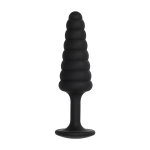 Butt Plugs
Butt Plugs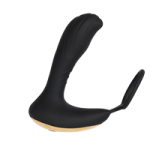 Prostate Massagers
Prostate Massagers
 Alien Dildos
Alien Dildos Realistic Dildos
Realistic Dildos
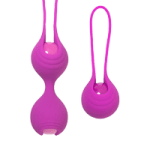 Kegel Exercisers & Balls
Kegel Exercisers & Balls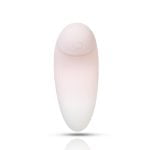 Classic Vibrating Eggs
Classic Vibrating Eggs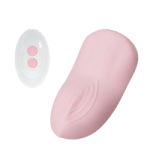 Remote Vibrating Eggs
Remote Vibrating Eggs Vibrating Bullets
Vibrating Bullets
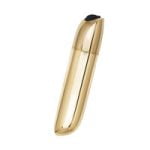 Bullet Vibrators
Bullet Vibrators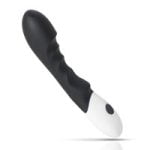 Classic Vibrators
Classic Vibrators Clitoral Vibrators
Clitoral Vibrators G-Spot Vibrators
G-Spot Vibrators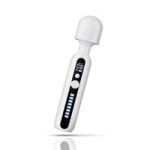 Massage Wand Vibrators
Massage Wand Vibrators Rabbit Vibrators
Rabbit Vibrators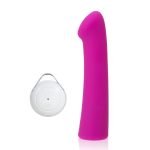 Remote Vibrators
Remote Vibrators
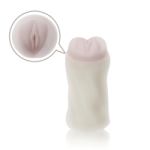 Pocket Stroker & Pussy Masturbators
Pocket Stroker & Pussy Masturbators Vibrating Masturbators
Vibrating Masturbators
 Cock Rings
Cock Rings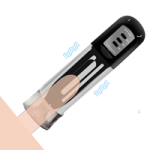 Penis Pumps
Penis Pumps
 Wearable Vibrators
Wearable Vibrators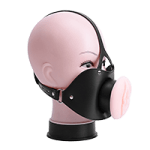 Blindfolds, Masks & Gags
Blindfolds, Masks & Gags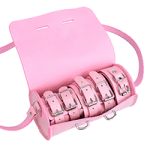 Bondage Kits
Bondage Kits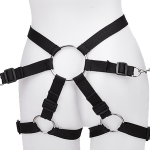 Bondage Wear & Fetish Clothing
Bondage Wear & Fetish Clothing Restraints & Handcuffs
Restraints & Handcuffs Sex Swings
Sex Swings Ticklers, Paddles & Whips
Ticklers, Paddles & Whips







